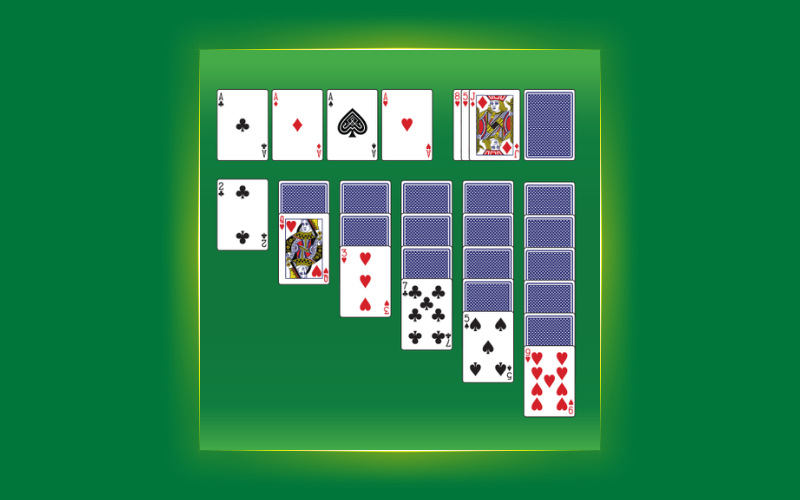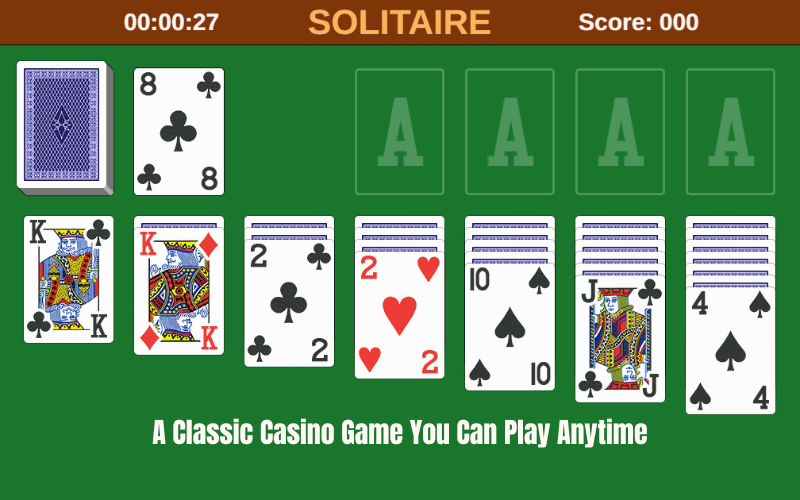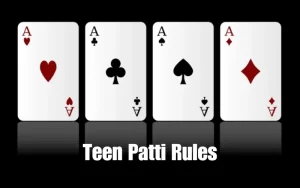Solitaire is one of the world’s most timeless and popular card games, known for its simple rules and addictive gameplay. Whether you’re looking to pass the time or hone your strategic thinking, Solitaire offers a perfect mix of relaxation and challenge. While it is often played as a solo game on a computer or mobile device, it can also be enjoyed in various versions in both digital and physical formats. This article will explore the history of Solitaire, the different variations, and how to play it, and it will give tips for improving your skills.
The History of Solitaire
The origins of Solitaire are unclear, but the game is believed to have originated in Europe in the late 18th century. Some records suggest it was initially played in France, where it was referred to as “Patience,” which is still the name used in many countries. The game was likely popularized in the 19th century as card games became more common in Europe.
The digital version of Solitaire, which gained massive popularity, was first introduced in 1990 with the release of Microsoft Windows. Solitaire became a feature of Windows 3.0 and quickly became a casual gaming staple. The simple yet engaging nature of the game made it a favorite for people of all ages, and it has remained one of the most popular card games worldwide.
How to Play Solitaire
In solitaire, players must sort a shuffled deck of playing cards from ace to king in four separate piles, one for each suit. A regular deck of 52 playing cards is often used for the game.
Basic Setup:
- The game begins with a predetermined arrangement of seven piles of cards called a tableau. The first pile has one card, the second has two, the third has three, and so on, until the seventh pile has seven cards.
- Only the top card of each pile is face-up, while the rest are face-down.
- You can draw from a stockpile of remaining cards whenever you need them.
Objective:
The goal is to move all the cards to the foundation piles, one suit at a time, from Ace to King. You can move cards within the tableau following a specific rule: a red card (hearts or diamonds) can only be placed on a black card (spades or clubs), and vice versa. The cards must also be placed in descending order, so a King can only be placed on a space, while a Queen can be placed on a King, a Jack on a Queen, and so on.
Variations of Solitaire
Solitaire has many different variations, each with its own unique set of rules and challenges. Here are a few of the most popular ones:
Klondike Solitaire
The original Solitaire game that most people know and love, Klondike, is the one that comes with Windows. It involves building sequences in descending order and alternating colors, as described in the basic rules above.
Spider Solitaire
Spider Solitaire is a more complex game typically played with two decks of cards. In Spider Solitaire, you must construct the tableau without alternating between black and red suits; whereas, in Klondike, you must arrange the cards in ascending order from king to ace. You can play Spider Solitaire with one or two suits, with two suits being the more challenging option.

FreeCell Solitaire
FreeCell is another popular variation played with a single deck of 52 cards. The main distinction in FreeCell is that every card is dealt face-up. This makes strategy and skill, rather than chance, the main factors in the game. The player must move the cards between the tableau and four open “free cells” to organize them into foundation piles.
Patiens (French Patience)
Patience is the French version of Solitaire and is a variant of Klondike. It has similar rules, but there is a difference in how cards are moved between tableau columns. Only when the top card of a sequence is face-up in Patients may it be moved from the tableau to the foundation pile.
TriPeaks Solitaire
When you play TriPeaks Solitaire, the cards are placed in a triangle configuration. To remove cards from the board, you must choose those that are either one higher or one lower than the top card. It’s an exciting and fast-paced version of Solitaire with fewer piles but a more significant emphasis on strategy.
Tips for Winning at Solitaire
While a game of both skill and luck, there are some strategies you can use to increase your chances of winning:
Focus on the Aces and Twos First
In most versions, the best strategy is to start by looking for Aces and Twos. Moving these cards to the foundation piles early gives you more room to maneuver the other cards and can help uncover hidden cards in the tableau.
Uncover Hidden Cards
Always aim to uncover face-down cards in the tableau as quickly as possible. The more cards you have visible, the better your chances of forming complete sequences and organizing the deck efficiently.
Don’t Rush the Stock Pile
In many versions, you can only draw cards from the stockpile a limited number of times. Take your time and ensure no more valuable moves are available in the tableau before drawing from the stock.
Use Empty Spaces Wisely
Kings are the only cards that may be temporarily put in empty spots in the tableau, so utilize them to your advantage. This will give you more flexibility when organizing the tableau.
Plan Ahead
Although can seem like a game of chance, planning is critical. Try to foresee the consequences of each move before making it. This can prevent you from blocking your future moves and help you stay on track to complete the game.
Conclusion
Solitaire is a classic card game that provides hours of entertainment, whether playing on your computer, mobile device, or with a physical deck of cards. With its simple rules and various versions available, there’s a Rummy and Solitaire game for everyone. Whether you’re playing Klondike, Spider, FreeCell, or other popular variants, the key to success is patience, strategy, and careful planning. By practicing these tips and refining your skills, you’ll improve your chances of winning and enjoy this timeless game even more.








